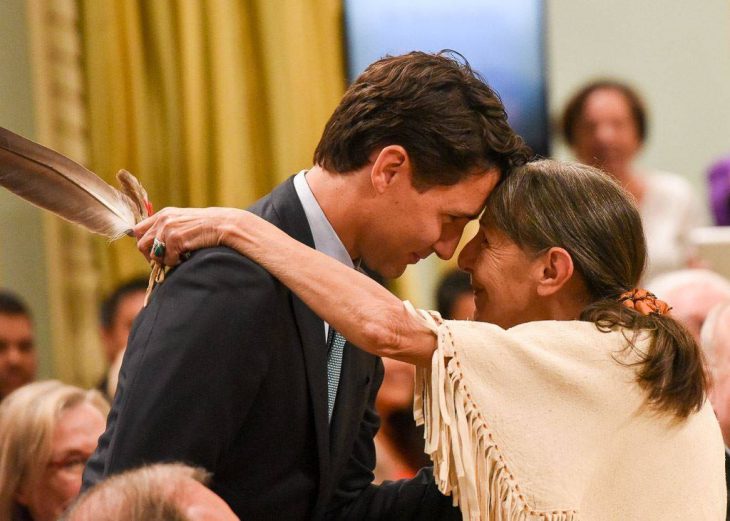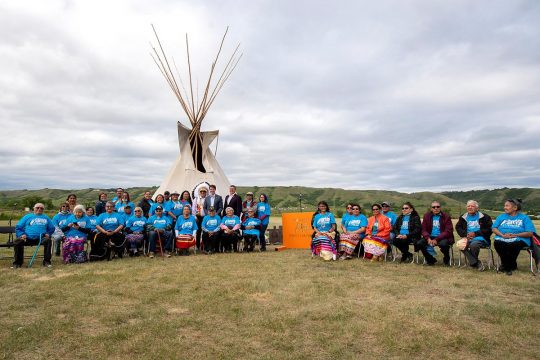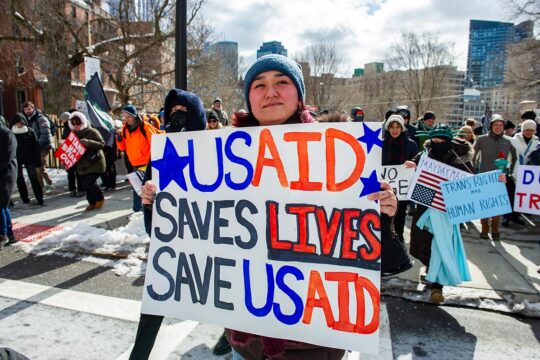For over a century, Indigenous children in Canada were separated from their families, communities and cultures to attend government-funded, church-run residential schools, in a concerted effort to assimilate them into mainstream Canadian society. The long history and ongoing legacy of the Indian Residential School System (IRSS) went largely unacknowledged until a formal truth-seeking process was undertaken by the Truth and Reconciliation Commission of Canada (TRCC) between 2009 and 2015. While the Commission’s formal truth-seeking process is now complete, the journey towards its ultimate objective – “nation-to-nation” reconciliation between Indigenous and non-Indigenous Canadians – has only just begun.
| Between 1867 and 1998, at least 150,000 children attended over 138 residential schools across Canada, where education was limited and neglect was institutionalized. |
According to the TRCC, nation-to-nation reconciliation is about establishing and maintaining a mutually respectful relationship between Indigenous and non-Indigenous peoples in Canada. It encapsulates both an envisioned outcome and process, which the Commission’s Final Report aims to guide, particularly through its 94 calls to action. These recommendations seek to “redress the legacy of residential schools and advance the process of Canadian reconciliation” through initiatives across many areas of Canadian life, including education, health, justice, media, business, arts and sports. The Canadian government has committed to fully implement these calls to action, in partnership with Indigenous communities, the provinces and territories, and other key partners. While some steps have already been taken, this diverse group of stakeholders has not collectively articulated a clear and common understanding of reconciliation. Indeed, the TRCC’s report and recommendations bring to light three fundamental tensions, which raise the following questions regarding the notion and practice of reconciliation: (1) What are the underlying issues that need to be addressed? (2) How should Canada’s national identity be adjusted? and (3) Who is responsible for taking initiative? These conceptual and operational tensions must be acknowledged and resolved if nation-to-nation reconciliation is to have any chance of success in Canada.
|
“We have a plan to move towards a nation-to-nation relationship based on recognition, rights, respect, cooperation and partnership, and we are already making it happen.” – Prime Minister Trudeau, Statement on Release of the TRCC’s Final Report |
1. Defining the Scope
The first fundamental tension that arises in the TRCC’s report concerns the scope of the issue it seeks to address, and requires simultaneous acknowledgment of the IRSS as both one mere vestige of Canada’s colonial history and a useful microcosm for understanding and addressing broader and ongoing colonial structures. The report strikes a balance by making clear that addressing the specific legacy of the IRSS is a necessary but insufficient precondition to nation-to-nation reconciliation. Indeed, the Commission’s calls to action are divided into 42 recommendations devoted to redressing the specific legacy of the IRSS and 52 aimed at reconciliation more broadly.
Many of these recommendations highlight harmful government policies beyond the IRSS system and promote a wide range of social, economic and cultural rights. For instance, by calling for recognition of Indigenous land rights, the TRCC has effectively overcome early concerns that its IRSS-specific mandate would prevent it from acknowledging the direct link between harms experienced by IRSS survivors and the forced removal of entire families and communities from their homelands. The TRCC’s recommendations do not, however, cover every facet of reconciliation, particularly those that fall outside mainstream understandings of the term. For instance, although the Commission’s report acknowledges the Indigenous perspective that respect for the natural world is crucial to reconciliation, none of its recommendations call for action on environmental protection. Thus, while the TRCC’s report expands the concept of reconciliation far beyond the IRSS, a more comprehensive and mutual understanding of the issues underlying the fractured relationship between Indigenous and non-Indigenous Canadians is required.
2. Reshaping Identities
By predicating reconciliation on addressing colonial structures beyond the IRSS, the TRCC highlights a second tension, which concerns the reshaping of colonial identities. In particular, the desire to create an all-inclusive Canadian identity must somehow be squared with the need to recognize the special identity of Indigenous peoples as distinct and sovereign nations. On the one hand, the Commission designates the United Nations Declaration on the Rights of Indigenous Peoples – the central tenet of which is the right to self-determination – as the “framework for reconciliation”. In doing so, the Commission promotes the unique and independent identity of Indigenous peoples and nations in Canada. On the other hand, a number of the Commission’s recommendations suggest an intent to integrate Indigenous peoples into mainstream Canadian life, such as by ensuring their equitable access to jobs, training, and education opportunities in the corporate sector. This suggests a degree of unification of activities and identities.
On the whole, however, the TRCC seems to advance a conception of reconciliation that would effectively expand the Canadian identity to fully accommodate and equally value Indigenous identities and, crucially, challenge existing power dynamics between them. This is certainly a noble goal, but Canada is vey well-acquainted with the serious challenges of promoting a common national identity without reinforcing colonial power relations. Indeed, it is Canada’s continuous failure to do so that necessitated the establishment of the TRCC. Greater consideration must therefore be given to how Indigenous identities and nationhood can be meaningfully included in the collective national identity without being compromised.
3. Sharing Initiative
A third tension brought to light by the TRCC’s recommendations concerns the respective roles of Indigenous and non-Indigenous peoples and governments in the reconciliation process. Since the Canadian government is responsible for both the IRSS and the broader colonial structures that have fractured nation-to-nation relations, it would seem iniquitous and ineffective to place the burden of reconciliation on Indigenous peoples. Nevertheless, some point to the importance of a “bottom-up” approach to reconciliation in Canada, particularly since the progress made so far – including the establishment of TRCC itself – has been a result of Indigenous mobilization and pressure in the face of official obfuscation and denial by the Canadian government.
While the TRCC’s calls to action are primarily directed at the Canadian government, many are to be implemented “in consultation and collaboration with” Indigenous groups. Insofar as such consultation and collaboration is initiated and controlled by the Canadian government, however, concerns properly persist about the paradoxical management of reconciliation by the same bureaucratic, state-run processes that have consistently undermined nation-to-nation relations. In particular, reconciliation will be undermined to the extent that state-initiated actions preclude Indigenous versions of reconciliation, which may not fit into the Canadian government’s established laws, policies, procedures and institutions. More work must therefore be done to find ways for the Canadian government to responsibly initiate reconciliation while simultaneously empowering Indigenous peoples to contribute to and control the process.
The Way Forward
By highlighting these fundamental conceptual and operational tensions, the TRCC’s calls to action offer an opportunity to develop a more sophisticated and nuanced understanding of nation-to-nation reconciliation. It is imperative that this understanding be shared among all Canadians. Indeed, the Chair of the TRCC, Justice Murray Sinclair, has emphasized the importance of developing a common conception of reconciliation so that Indigenous and non-Indigenous Canadians can effectively work together to achieve it. Only by cooperatively resolving the tensions inherent in the notion and practice of nation-to-nation reconciliation can all stakeholders be prepared to seize the opportunities and overcome the challenges that are sure to arise on the long road to reconciliation between Indigenous and non-Indigenous populations, both in Canada and beyond.
|
“If we can agree on what that relationship [between Indigenous and non-Indigenous Canadians] needs to look like in the future, then what we need to think about is what can we do today that will contribute to that objective.” – Justice Sinclair, What is Reconciliation? |
* Michele Krech is a New York University (NYU) School of Law Post-Graduate Fellow, currently working at the International Court of Justice in The Hague. She holds an LL.M. in International Legal Studies from NYU School of Law, a J.D. from the University of Ottawa, an M.A. from the Norman Paterson School of International Affairs at Carleton University, and a B.A. in Global Development Studies from Queen’s University.






